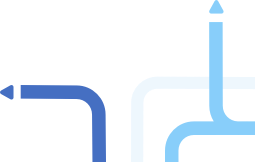Living with hearing loss today is nothing like it used to be. People with hearing loss can use modern technology, sign language and other trainable skills to communicate on their own terms, connect and interact with others.
Remember to consult with your hearing care provider to help you decide which technology or device is most suitable for your needs.
Hearing Assistive Technology systems (HATs) or Assistive Listening Devices (ALDs)
HATs/ALDs assists people with hearing loss to:
- Access common audio and safety technologies
- Communicate with others
- Hear in a variety of situations and scenarios
- Perform daily tasks in their immediate environment where they need to be aware of sounds (home, work or public spaces)
Most HATs/ALDs are not wearable devices; however, they can be used with or without hearing aids or cochlear implants. Here are a few examples of how these systems can support a hard-of-hearing person:
- Hearing alarms or doorbells
- Hearing the TV
- Noisy environments
- Over distance
- Over the telephone
- Small or large group environments (restaurants, concerts, large venues, meetings)
Popular Assistive Listening Devices
There are a wide range of HATs/ALDs available in the market. Here are some of the popular ones:
Bluetooth
Bluetooth uses high frequency radio waves to transmit data safely and without interference. Using Bluetooth, a person can connect their wireless hearing aid or use a Bluetooth neck loop to connect with their cochlear implant.
Frequency Modulation (FM) Systems
FM systems are wireless devices that assists both people who have hearing aids or cochlear implants or do not use any device but are hard-of-hearing. This system providers better clarity of speech or sound especially over distance or when in noisy environments, it provides greater clarity of speech by reducing background noise.
Induction Loop Systems
Induction loop systems are also known as hearing loops or audio frequency loops (AFILs). They directly transmit audio signals into a hearing aid using a magnetic field. Learn how hearing loops work here.
Infrared Hearing Systems
Infrared hearing systems are considered an alternative to the induction loop system. It can improve the listening capability in conference rooms, theatres or home (to watch TV, for example). It works via a receiver and can be used with headphones or connected to a hearing aid or cochlear implant. Learn more about about this system from Cleara Soundand Hearing Loops Australia. You can also see how infrared technology works here.
Personal Amplifiers
Personal sound and hearing amplifiers boost low-volume sounds and/or voices, including sounds from a distance. This technology can assist people with diverse hearing needs, including impaired vision and low dexterity. Learn more about personal amplifiers from Assistive Listening Device Systems, Hearing Australia, Hearing Services.
Hearing Aids
Hearing aids are worn inside or behind the ear. It assists people with hearing loss to hear and listen better in quiet and noisy environments and situations. Hearing aids magnifies sound vibrations and helps in improving hearing and speech comprehension.
There are wide range of devices, levels of technology that are designed to support varied hearing needs that can be customised to suit specific hearing requirements, lifestyles and budgets.
Always consult an audiologist to find the right device to support your hearing needs.
Assistive Technology
Assistive technology (AT) provides people with solutions to help enhance quality of life, functioning and independence. Using assistive, adaptive and rehabilitative devices, people have control and independence in their self-care and daily life activities. The most common example of assistive technology are wheelchairs, which enhance mobility for people who cannot walk.
For Deaf and/or hard-of-hearing people, assistive technology can include specialised alerting devices, FM and sound amplifiers, hearing aid accessories, special telephones, and so on. Learn more about assistive technology options from the NDIS.
Where to find help
Consult with an audiologist service to find the right devices to support your everyday living needs.
To find audiology services near you, use our interactive service finder.
Where to find help
Consult with an audiologist service to find the right devices to support your everyday living needs. Or, you can visit:
South Australia
Can:Do Hearing is an independent not-for-profit audiology service providing hearing solutions to the South Australian community for over a decade. All profits go directly to supporting the vital work of our charities Deaf Can:Do and Can:Do4Kids.
Queensland
Deaf Services - Hear for Kids team of allied health professionals provides assistive technology assessments for communication devices and safety technology under NDIS.
Victoria
Expression Audiology provides service - not only selling hearing aids, but their service includes fittings, adjustments and ongoing services as well as help with hearing loss and tinnitus management, assistive listening devices and customised ear plugs.





